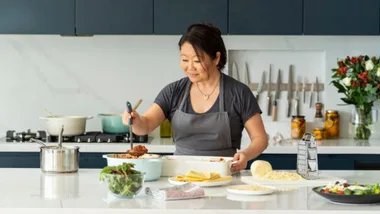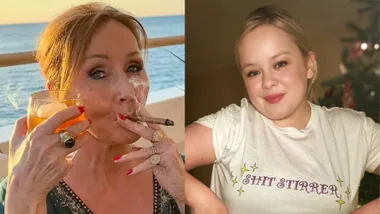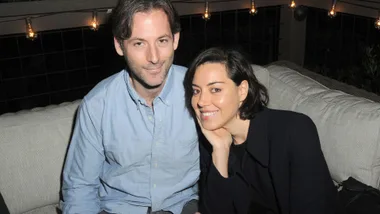Each time her mother twisted and turned, dancing at a family party in the front room of their small home in Streatham, South London, 10-year-old Naomi Campbell gave a silent and serious nod, an acknowledgment that she was watching.
When her mother finished the routine, it was her turn. She inhaled deeply and waited for the beat of the music, just like she’d been taught, before mirroring her mother’s dance moves perfectly. They continued again and again, each time igniting a passionate applause from those watching.
Even then Campbell could command a room, a skill she undoubtedly inherited from her professional dancer mother. She learnt early that her cult-like beauty was a great way to get noticed but “swagger”, as she would later call it, was how you were remembered. And her accelerated ascent from teen model to one of the most successful supermodels in the world, an unshakable catwalk icon even today, can surely be credited to that attitude, an exhilarating mix of grace and fire that translates just perfectly into that legendary walk.
“She feels the music like no other,” fashion designer John Galliano said of Campbell’s enduring allure in an industry renowned for its youthobsessed fickleness. “When she appears to do a show, it’s actually not so easy for the other models. Because she commands. She slays.”
Campbell was born in Streatham, South London on May 22, 1970, and raised by her Chinese-Jamaican grandmother Ruby Ming. For most of her childhood, her mother Valerie Morris toured Europe as a professional dancer. Campbell’s father walked out before she was born.
“I do feel that I abandoned her,” said her mum in an interview in 2010. “Looking back on that, you know, you sort of realise that material possessions are not the only thing that a child needs. But, sometimes, that child needs its biological mother.”
By age three, Campbell was already attending the Barbara Speake Stage School. At seven she appeared in the music video for Bob Marley’s “Is This Love” and at 10 she was accepted into the Italia Conti Academy of Theatre Arts to study ballet. In 1983, she danced in Culture Club’s video for “I’ll Tumble 4 Ya”.
It was assumed she’d follow in her mother’s footsteps but those dreams were rerouted after a chance encounter with Beth Boldt, head of the Synchro Model Agency, when Campbell was 15. “When I saw her, you could just tell – she radiated beauty,” Boldt has said. A few months later she appeared on the cover of British Elle and in 1986 she did her first runway show, walking for Jasper Conran. It wasn’t long before Karl Lagerfeld, Azzedine Alaïa, Isaac Mizrahi, Yves Saint Laurent and Gianni Versace were also interested.
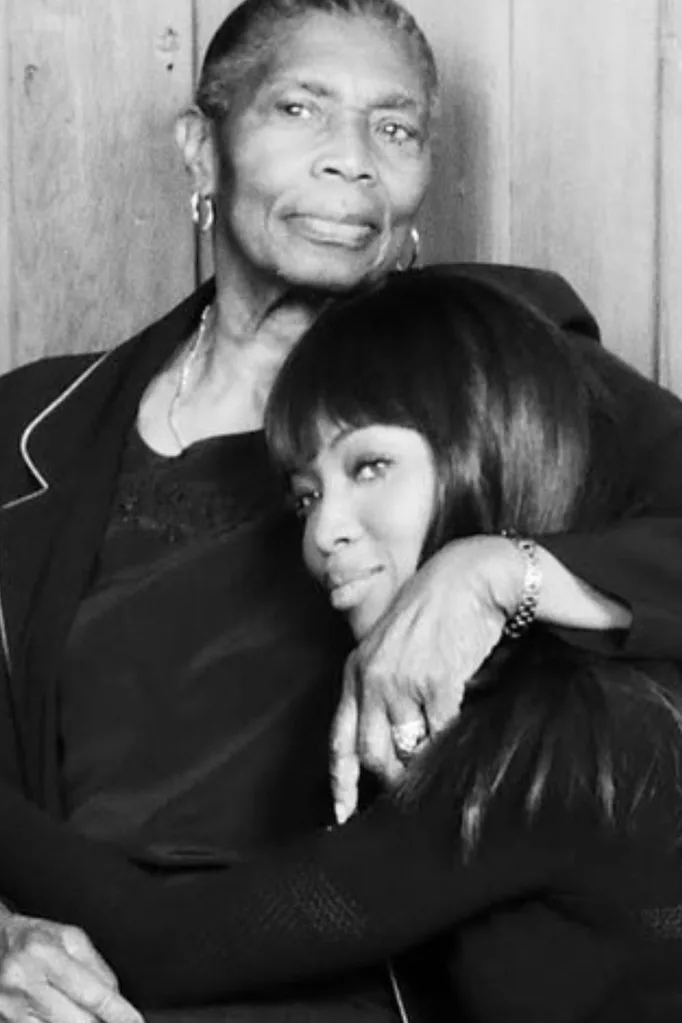
In two short years, Campbell made such an impact on the fashion world that her mentor Yves Saint Laurent threatened to withdraw his advertising from French Vogue if it continued to refuse to place black models on its cover. And so, in August 1988, Campbell became the magazine’s first black cover star.
She also became the first British black model to appear on the cover of British Vogue, and the first black model to cover US Vogue’s most prestigious issue of the year – the September issue – in 1989.
But being a mannequin wasn’t enough for Campbell, who refused to silently accept her status as a token black model in a line-up of only white beauties. “There is prejudice,” she openly told The Guardian in 1997. And rather than chipping at her appeal, her outspoken manner fuelled adoration from the highest echelons of the fashion world.
The word “supermodel” was first coined in 1979, but it wasn’t until the early ’90s that it reached critical mass. At the time, Campbell was part of a new wave of breathtakingly beautiful and glamorous models who appeared on runways and magazine covers all over the world.
Claudia Schiffer and Cindy Crawford were constantly coveted but it was Campbell, along with Christy Turlington and Linda Evangelista, who became known as “The Trinity”. “We were truly friends,” Campbell shared in 2016.

No picture encapsulates that era better than when the three were snapped giggling and drinking champagne in a bathtub at the Paris Ritz hotel after the 1990 Versace couture show, a frenetic energy truly oozing from the shot. The in-demand trio would reign for almost a decade, with their every move extolled. When Campbell fell as she walked for Vivienne Westwood in 1993, bashfully smiling at being beaten by a pair of towering platforms, she was celebrated when most models would be chastised.
Campbell was in demand romantically as well. There were brief romances with Mike Tyson, Usher, Eric Clapton and Robert De Niro. The only one that lasted any distance was a five-year romance with Formula One boss Flavio Briatore, ending amicably in 2003.
Beloved as she was, the supermodel was developing a notoriety as a “diva”. “Her reputation in the fashion world is that she’s fabulous when she’s fabulous and if Naomi suddenly doesn’t show up you’ve just got to eat roe and hope that next time she will show up,” André Leon Talley, former editor-at-large of US Vogue, once said. In 1993 she was fired from her agency, Elite Model Management, for reportedly abusing staff and clients. Then in 2000 things took an uglier turn, with Campbell pleading guilty to assault after throwing a phone at her personal assistant, later confessing that her anger issues were the result of an addiction to cocaine, something she had remedied with a stint in rehab.
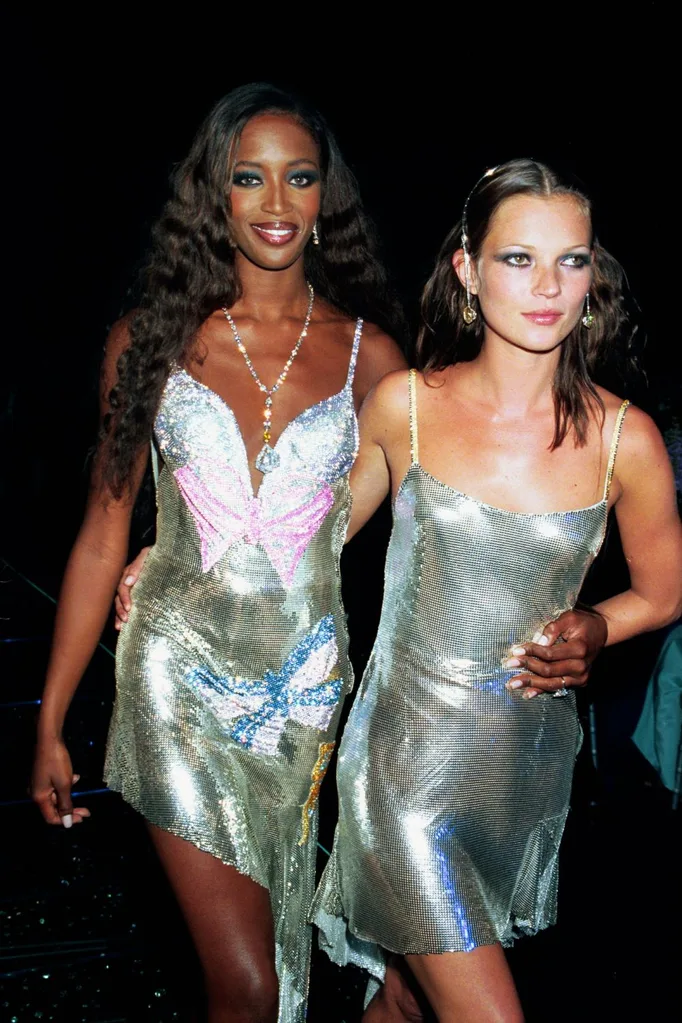
But the scandals didn’t end there. In 2007, after pleading guilty to assaulting a former housekeeper, the model arrived for community service at a New York City sanitation garage in a rotation of high-end couture, including a shimmering US $300,000 Dolce & Gabbana gown, a move that was slammed by many as distasteful.
In 2010 she was back in court for the well-publicised war crimes trial against former Liberian leader Charles Taylor. It was claimed he gifted her “blood diamonds” after a party in September 1997, with Campbell confessing she thought they were just “dirty rocks”.
Finally in 2010, after an undoubtedly challenging decade, Campbell confessed that she was seeking therapy for abandonment issues stemming from her childhood, which had triggered her earlier cocaine addiction.
This marked a new chapter for Campbell. In 2013, she ended a five-year on-off relationship with Russian billionaire Vladislav Doronin, her last long-term romance to date.
Next she signed up to mentor up-and-coming models on The Face, her first foray into reality television. As expected, her sharp tongue made for brilliant television but many saw a softer side to the self-proclaimed “bitch” of the ’90s. And tellingly, younger models, such as Adut Akech and Anok Yai, now routinely cite her as a mentor and protective role model. “She’s like a second mother,” Akech said last year.
But it’s never just been about fashion for Campbell. Over the years she has constantly, and quietly, given back. In 2005 she set up Fashion For Relief, a catwalk show and high-profile auction that’s helped raise millions for charities over the years. Her work in Africa, supporting everything from infrastructure projects to advancing women’s rights, started in 1993 and continues today, with Nelson Mandela even naming her his “Honorary Granddaughter”.
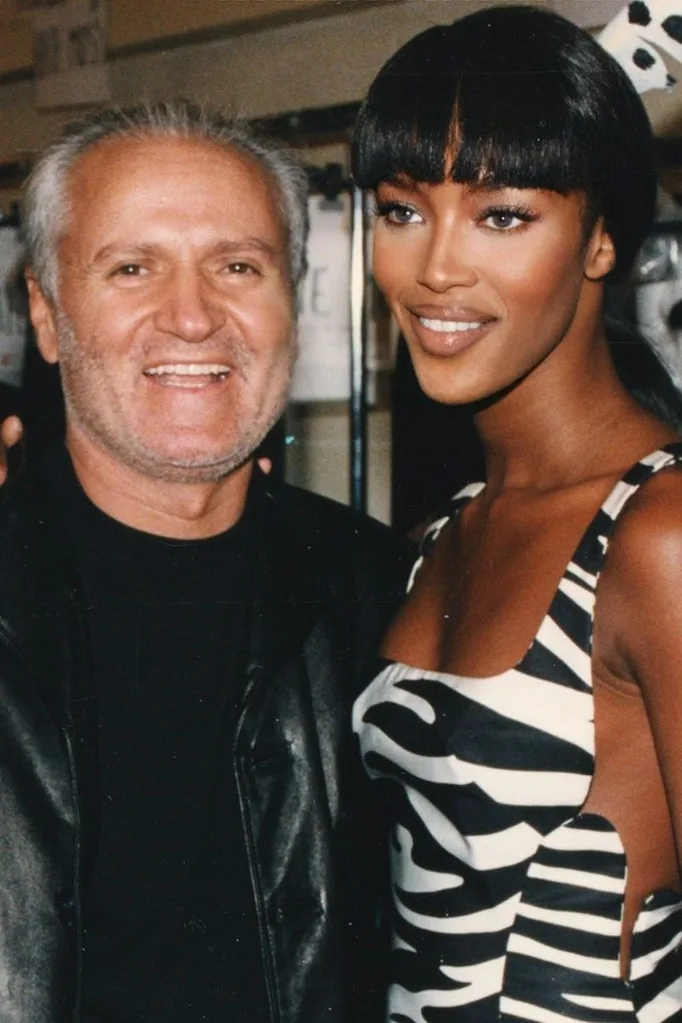
Her charity work has generally gone unrecognised – lost under column space given to that hot temper – but in late 2019 she received the Fashion Icon award at the Royal Albert Hall in London, given to those who’ve used their status for philanthropic endeavours. “I learnt today that I’m the first woman of colour to receive this award,” she said tearfully.
In May 2020, the supermodel reached the milestone birthday of 50. It also marked 35 years in the business for Campbell; unlike her fellow supers there’s been no career hiatus nor celebrated return. In 2016 when a reporter asked why she still tirelessly works, especially when she’s worth a staggering $90 million, she replied, “There’s no plan. There’s no agenda.”
And yet among the extravagant couture shows and frivolous parties, Campbell has always had a purpose, opening up important conversations about race since she first broke into the whiter-than-white fashion world.
Not that she’s opposed to a little bit of partying – even if it’s a rather sober affair these days (in 2013 the supermodel revealed she had given up alcohol and felt “happier” without it).
“I’m not afraid of being 50,” Campbell has said of her upcoming birthday. “I’m looking forward to a good old dance, too. I want to make sure I dance the night away, surrounded by people I love and who have been with me through thick and thin.”
Since then, Campbell, now 53, has had two children, a daughter and son, but their names have not been revealed.
This article originally appeared in the June 2020 issue of marie claire.

